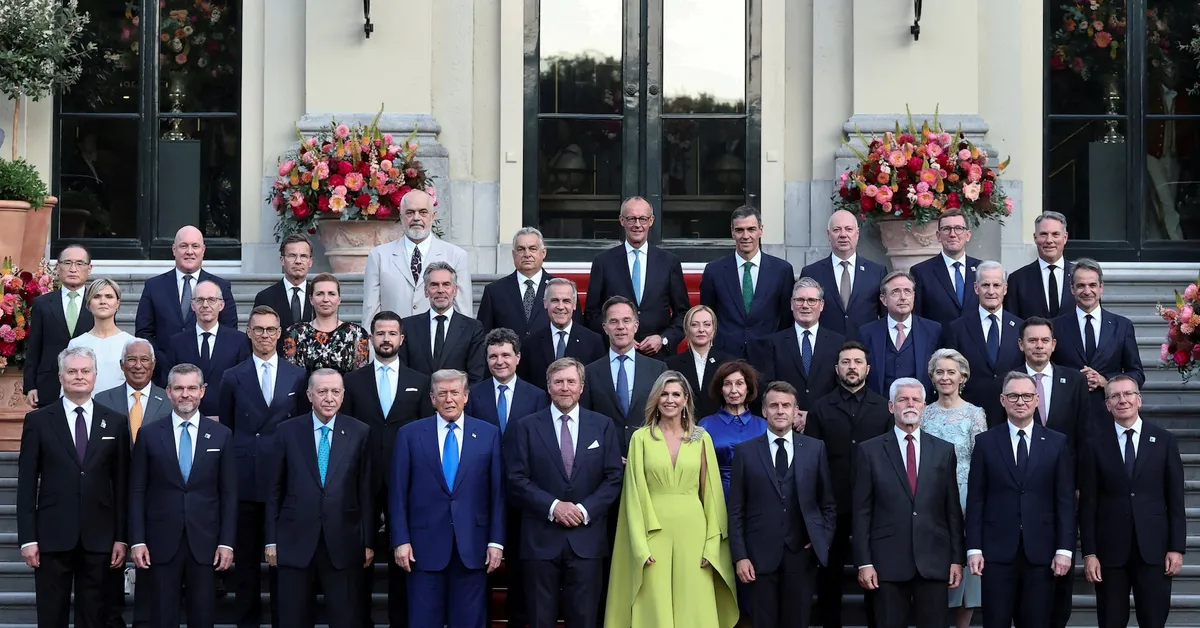
On June 25, 2023, NATO leaders convened for a pivotal summit in The Hague, where they were poised to significantly increase defense spending in response to evolving global security challenges. This summit was tailored to address concerns raised by U.S. President Donald Trump, who reassured allies of America's commitment to their defense during a period marked by heightened tensions with Russia.
The NATO summit is set to endorse a new defense spending target of 5% of GDP, a significant escalation from the previous goal of 2%. This decision comes as a direct response to Trump's demands and European nations' apprehensions regarding Russia's military activities, particularly following its 2022 invasion of Ukraine. NATO Secretary General Mark Rutte acknowledged the financial challenges faced by European countries and Canada but emphasized the necessity of this increased spending to address the looming threats posed by Russian aggression. “There is no alternative,” he stated, reflecting a shared conviction among NATO leaders about the urgent need for enhanced military readiness.
Before the summit commenced, President Trump downplayed concerns regarding his commitment to NATO's Article 5, which outlines the principle of mutual defense among member states. He reassured allies, stating, “We’re with them all the way.” However, his comments on the flight to the summit stirred debate, as he suggested that there are various interpretations of the mutual defense clause. Finnish President Alexander Stubb, representing a nation that shares a border with Russia and joined NATO in 2021, remarked on the alliance's transformation, declaring, “We’re witnessing the birth of a new NATO,” which he argued would lead to a more balanced alliance with increased European responsibilities.
The ambitious new spending plan, aimed to be reached over the next decade, represents a leap worth hundreds of billions of dollars each year. Under the revised framework, NATO members will allocate 3.5% of their GDP towards core defense initiatives—such as troop deployments and weaponry—while dedicating an additional 1.5% to broader defense-related activities, including cybersecurity, pipeline protection, and infrastructure adaptations for military operations. Although all NATO member states supported the statement endorsing this target, Spain indicated it would not pursue the 5% goal and could fulfill its commitments with lower expenditures. Rutte contested Spain's position but ultimately accepted a diplomatic compromise with Spanish Prime Minister Pedro Sanchez to ensure a smooth summit.
Amid the discussions, President Trump was scheduled to meet with Ukrainian President Volodymyr Zelenskiy separately, after Zelenskiy attended the pre-summit dinner. The focus of the summit remained on the spending pledge, with Rutte aiming to maintain a cohesive narrative to avoid friction with Trump. However, Hungarian Prime Minister Viktor Orban caused a stir by remarking that NATO should not involve itself in Ukraine, asserting that Russia does not pose a significant threat to the alliance. These comments reflect the ongoing complexities within NATO regarding its strategic direction and the perception of Russian military capabilities.
The Kremlin has reacted strongly against NATO's proposed defense spending increases, accusing the alliance of escalating militarization and mischaracterizing Russia as a significant threat. This ongoing tension highlights the delicate balance NATO must navigate in addressing its members' security needs while managing relations with Russia.
In summary, the NATO summit in The Hague marks a crucial step towards enhancing collective defense capabilities in light of rising threats, particularly from Russia. As member states commit to higher defense spending, the future of NATO will likely hinge on its ability to adapt to an evolving security landscape.